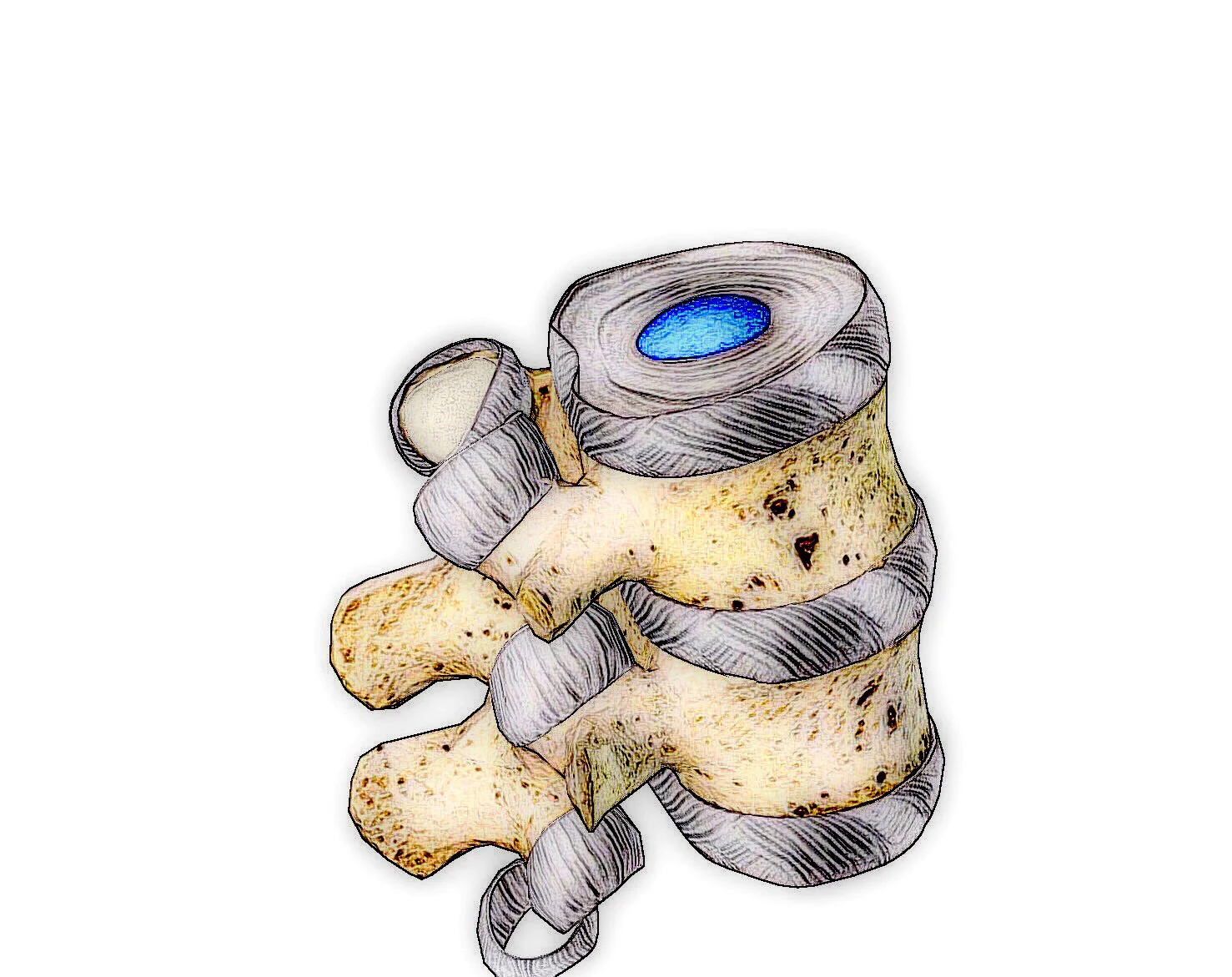Bone Up On Basic Anatomy: A Snapshot Of Your Spine (5 minute read)
Your spine, if it is like most spines, is complete with a tailbone, a sacrum, five lumbar vertebrae, twelve thoracic vertebrae (hooked to your two sets of twelve ribs on the left and right), seven cervical vertebrae, 23 juicy, reinforced disc cushions in between each vertebrae, a partridge and a pear tree.
Well, we can ignore those last two items. But we cannot ignore the fact that the thing we have sometimes referred to as a singular “backbone” is made up of 24 mostly cancellous (or spongy), light, movable bones and, as a whole, is largely comprised of intervertebral “soft-centered candy, with gelatinous pulp in the middle, surrounded by layer after layer of cartilage-impregnated fiber.” We call these things discs. In the lumbar spine, the intervertebral discs account for about 30 percent of the length; in the thoracic - 25 percent; in the cervical - 17 percent. [1]
We can also not ignore the fact that each vertebra is controlled by many finely tuned myofascial movers. The larger muscles that blend into and connect with the vertebrae are sometimes called the erector spinae muscles. You can feel these long muscles lying on either side of your or your friend’s spine- they will not protest.
We say “lying” but these guys and gals are doing nothing of the sort. The erector spinae are tasked with staying relatively switched-on to support our uprightness. So it’s important to rest them on-the-regula’ with horizontalness!
There are also many mini-muscles between each vertebra; placed and poised for the particular movements of the lumbar, thoracic and cervical spine.
Follow along with the video and practice essential movements of the lumbar spine.
Those particulars are: lots of forward flexion and backward extension in the lumbar spine and very little rotation; lots of rotation and very little forward flexion and backward extension in the thoracic spine; flexion, extension and rotation in the cervicals. Some sidebending is enjoyed by your entire spine. The thoracic spine would be able to side bend to either side as much as the cervical spine but the ribs get in the way. As segments, the lower thoracic vertebrae and the lumbars have about the same range when side bending to one side. The cervical spine has the greatest ability to sidebend to one side.
From your skull, your brain continues caudally (this means toward your sacrum) as your spinal cord. It runs the length of the spine. It occupies and operates from a round space formed by something called the neural arch- which is a ring attached to the larger cylindrical body of each vertebrae. Your “cord,” which is nerves and fascia, sends out extensions of nerves and fascia through tiny tunnels formed by spaces between the neural arches of one vertebra positioned above or below the next.
This snapshot may satisfy your curiosity about the human spine. If so, feel free to drop off here. If you would like to learn more about how your spine moves, why it sometimes hurts and what to do about it- read on.
[1] Myers, Thomas W. Body³: a Therapist's Anatomy Reader. Kinesis, 2014.



